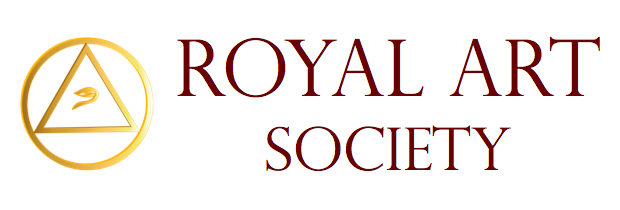
Speculative Freemasonry
Speculative Freemasonry had its genesis in seventeenth century Britain, where a mystical, proto-scientific culture thrived. Kirk MacNulty, in The Way of the Craftsman,[1] builds on the well known work of Francis Yates, tracing the origins of Speculative Freemasonry to the Renaissance, which embodied three major schools of thought: Scholasticism, Humanism, and the Hermetic-Kabbalistic tradition.
It was during the Early Enlightenment period (1685-1730) that Freemasonry emerged as a speculative art, while modern science was just still arising out of the Renaissance, born of the common predecessor, alchemy. Under the feudal system advancements were made in agriculture until a food surplus allowed for the growth of towns and trade.
In Italy and Germany the cities acquired their independence from feudal overlordship, while in France and England the towns received charters and certain liberties under the control of the Crown. By the late thirteenth century representative assemblies of the merchant classes had formed in government all across Europe.
As the merchant class grew wealthier and more powerful, the restrictions of the guilds drove some manufacturers to relocate outside guild jurisdiction, and Henry VIII seized the property of a number of guilds as he did the monasteries. These factors contributed to the downfall of the trade guilds.
Records from this time show that Scottish Masonic guilds were accepting non-operatives into their societies, probably as patrons, and as the operative guild faded in relevance, the speculative organization endured.
During this time the Catholic Church was attacked by Protestant uprising throughout Europe. As the Church completely lost its historical power, Enlightenment philosophers like Locke (champion of life, liberty and property), Voltaire and Adam Smith intuited that science must be based on nature and rationally comprehensible Natural Law.
Likewise, the beginnings of the scientific worldview were crystallizing in the persons of Nicholas Copernicus, Johannes Kepler, Galileo Galilei, Rene Descartes, and Robert Boyle. The industry of these individuals and the subsequent effect on the world was properly named “Scientific Revolution.”
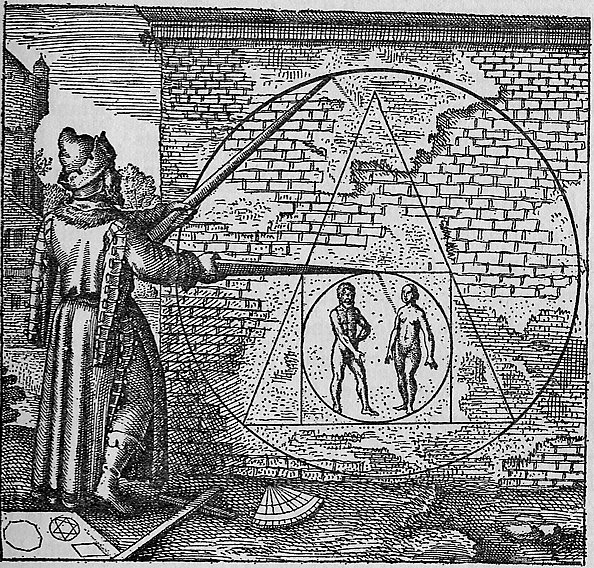
Michael Maier, “Atalanta fugiens,” Emblem 44 (1618)
The Mystical Ascent
Typhon kills Osiris by a ruse, and after that he scatters his limbs
far and wide, but the famous Isis collects them.
Syria has Adonis, Greece has Dionysus,
Egypt has Osiris, who is nobody else but the Sun of Wisdom;
Isis is the sister, wife and mother of Osiris,
Whose limbs are dissected by Typhon, but which she joins together.
But the phallus was lost, spread over the waves,
For the Sulphur, which produced Sulphur, is missing.[2]
Western esoteric tradition describes the story of Creation as a progressive degeneration of divine unity into plurality, and the process of redemption as a reversal of this condition.
This is the Neo-Platonic contemplation, the Kabbalistic Tikkun, or Return, the Hermetic or alchemical transmutation or Great Work, the Magic of the Renaissance, the Rosicrucian Art, and the Masonic Craft.
The mystical ascent, precisely, is the progression of a man from his lowest nature, the physical, through his mental and spiritual natures, to end in the divine presence, which exists within his soul. The three degrees of Craft Freemasonry reflect the scheme of moral, intellectual, and spiritual development that underlies the Western esoteric tradition of the mystical ascent.
In the first degree the candidate is directed to universal moral precepts, in the second degree he is advised to study under the comprehensive curriculum of the liberal arts, and the third degree implies a spiritual awakening, described in the Baltimore Convention Trestleboard of 1843 as a “mystic ceremony.”[2]
The alchemical image of the king rising from death is parallel with the images of Osiris, Mithra, Jesus Christ, Christian Rosencreutz, H.A. and the newly made Master Mason rising from the grave. It is the rising up from the most mundane human existence to the most divine through the process of the mystical ascent that characterizes the Western Mystery Tradition and informs the cosmology and mystical methods of Freemasonry.
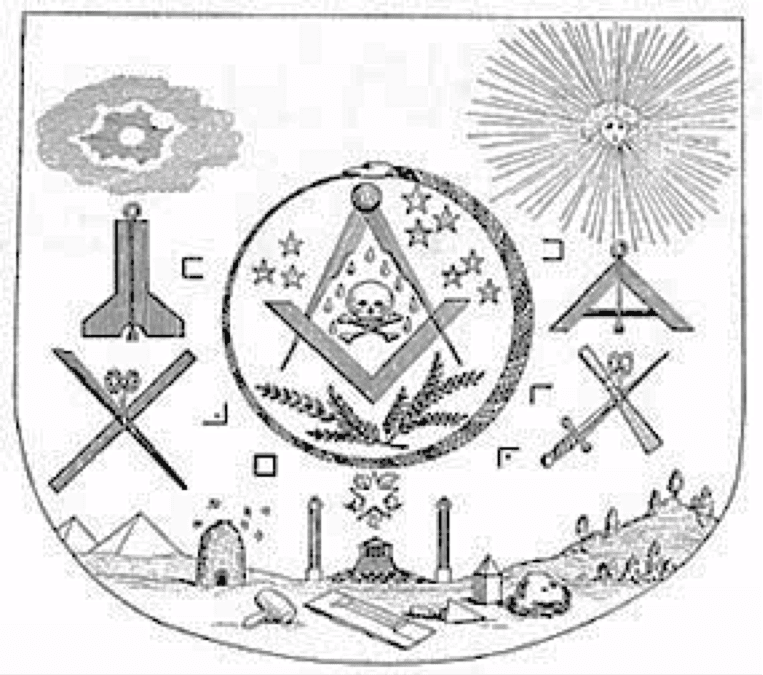
Alchemical Symbolism in Craft Lodge Freemasonry
The internationally respected Masonic author Kirk MacNulty outlines the basic laws of esoteric Freemasonry in his book The Way of the Craftsman. These, unsurprisingly, shall be plainly found to underlie each of the Western esoteric traditions. These are: the Law of Unity, the Law of Opposites, the Rule of Three, and the Law of Four Levels.
MacNulty describes the Law of Unity as the “first and fundamental law in all the Craft’s teaching,” and goes on to explain that the pentacle or “Blazing Star” on the Tracing Board of the First Degree is a symbol of this Unity, which represents the “Divine Presence within each one of us.” The Law of Unity is the alchemical mystical union of microcosm and macrocosm.
MacNulty then describes the Law of Opposites as being represented in several ways on the First Degree Tracing Board. It appears most conspicuously, perhaps, with the images of the sun and the moon, which are placed on either side of the Blazing Star.
According to the Western Mystery Tradition, this symbolism of polarity specifically implies the duality of the subjective universe and divinity, microcosm and macrocosm, or man and “God.” These two stand at opposite poles of the divine hierarchy, the stations of the mystical ascent, which are to be found in alchemical traditions.
MacNulty’s third law, the Rule of Three, is derived from the Law of Opposites, teaching that, “…Stability can be achieved and maintained by the action of two opposing agencies which are held in balance by the mediation of a third agency which acts between the two.”
This third law is evident in the three Masonic pillars of Strength, Wisdom, and Beauty, represented respectively by the Doric, Ionic, and Corinthian columns of the First Degree Tracing Board. This is the alchemical formula represented by the Sun, the Moon and Mercury, or Sulfur, Salt and Mercury, known as the Chymical Wedding.
MacNulty’s fourth law is the Law of Four Levels, which describes Masonic cosmology as it is illustrated on the First Degree Tracing Board. The first level is the Chequered Pavement, symbolic of the cosmic opposites, the level of the physical world and that part of the individual which has contact with the physical world.
The second level includes the Altar, Great Lights, and Three Columns, and corresponds with the psychological world. The third level, the top of the board depicting the heavens, represents the spiritual world. The fourth level is the five-pointed Blazing Star, which indicates the Divine Presence as a light defined by the five elements of alchemy; Air, Fire, Water, Earth and Spirit.
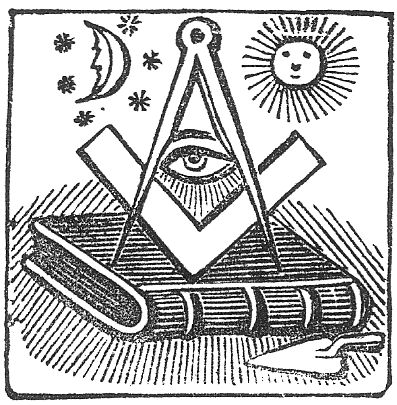
Alchemical Symbolism in Craft Lodge Ritual
Timothy Hogan has been involved with Freemasonry, Rosicrucianism, Templarism, and other fraternal orders for many years. He is a lecturer, author and a former editor and writer for periodicals, especially on the topics of alchemy, Freemasonry and other topics related to the Western Mystery Tradition.
In The Alchemical Keys to Masonic Ritual[3], Timothy Hogan makes a number of true observations regarding alchemical symbolism in the Craft. He notes that Albert Pike discusses the Kabbalistic Tree of Life in Morals and Dogma. The tree consists of ten sephirot or spheres with twenty-two paths between the ten sephirot. The sephirot are placed on a framework of three pillars and three main levels from top to bottom. Masonic penal signs upon the body correspond with these three levels.
Traditionally, the top three sephirot on this tree represent the same trinity as the alchemical Sun, Moon and Mercury, while the bottom seven sephirot correspond to the seven alchemical planets and metals. The middle pillar of the Tree of Life was composed of the symbols of sun, moon and mercury, the lesser lights (sun, moon and Master of the lodge) from the lecture of the first degree, the Entered Apprentice (EA).
In the EA degree the initiate’s attention is brought to the left hand pillar and the left side of the body. Likewise, the second, Fellowcraft degree stresses the right pillar and the right side of the body. In the third and final degree, the Master Mason degree, the brother is balanced between both pillars to identify with the Middle Pillar.
Alchemical symbolism may be found less explicitly in Masonic ritual in the symbol of the Square and Compasses, the very emblem of Freemasonry.
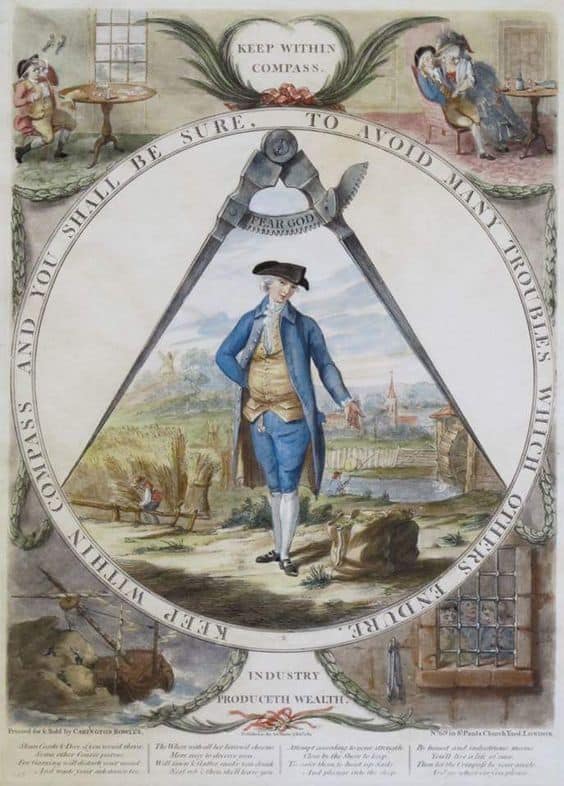
The Square and Compasses
The Square and Compasses emblem is the foremost symbol of Freemasonry. Freemasonry seeks more wisdom, known as “Light” or illumination, from the Great Architect or Supreme Being. A ‘G’ representing ‘God’ and ‘Geometry’ is sometimes found in the center of the Square and Compasses.
The Square and Compasses with the Volume of Sacred Law are known as the three Great Lights of Freemasonry. The Volume of Sacred Law is any scripture agreeable to the Lodge, traditionally but not exclusively, the Holy Bible.
The compasses, not to be confused with the compass (which is used to show the four cardinal directions), are used in operative stone masonry to circumscribe a circle around a point. In speculative Masonic ritual the Compasses are said to “circumscribe our desires and keep our passions within due bounds.”[3]
The compasses create circles, and are thus associated with the macrocosm, the heavens; celestial bodies and planetary orbits; or astronomy, physics and metaphysics. The square measures plane surfaces so it is associated with the earth and the microcosm, or temporal things, such as biology, medicine, psychology, ethics and politics.
The square is an ancient tool used in operative stone masonry to cut rough stone in right angles to create a perfect stone. The perfect ninety-degree angle of the square shows a true right angle with which to measure the angles of the builder’s carved stones. Within the degree lectures, speculative Masons are instructed to always “square our actions by the square of virtue with all mankind.”
Acting on the square implies following the Golden Rule, treating others as one would like to be treated, as in the colloquial “square deal.” Freemasons are admonished to always “meet upon the level, act upon the plumb and part upon the square.”
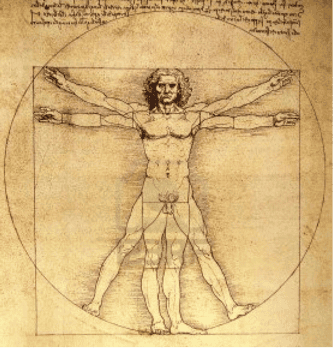
Several centuries before the Christian Era, these universal principles were advocated using the symbolism of the square and compasses in ancient China by Confucius and members of his school, as well as Daoist disciples of Laozi such as the semi-legendary Zhuangzi.
The square and compasses are paired opposites much like the Chinese Yin and Yang in the Taiji Symbol. This is well illustrated in old alchemical manuscripts, such as the treatise “Azoth” in the landmark Materia Prima of Basil Valentinus, first printed at Frankfurt, Germany in 1613. The compasses correspond to masculinity and the light of the sun, while the square is matched with femininity and the moon.
In alchemical symbolism the physical world is contained within the four corners of the earth, represented by the square; the spiritual world, having no boundaries, is symbolized by a circle. Medieval alchemical texts direct to “square the circle,” to discover the Philosopher’s Stone. The alchemist recognizes the sacred mathematics in Leonardo Da Vinci’s Vitruvian Man framed by a square and a circle.
As the three degrees of Craft Freemasonry proceed, the spiritual compasses rise above the physical square symbolically, on the Sacred Book of the Law on the altar. As Brother Hogan has noted, the alchemical symbolism in these fundamental Masonic traditions is apparent.[4] Today this universal dualistic cosmology is a philosophical touchstone of an enlightened and thriving global community.
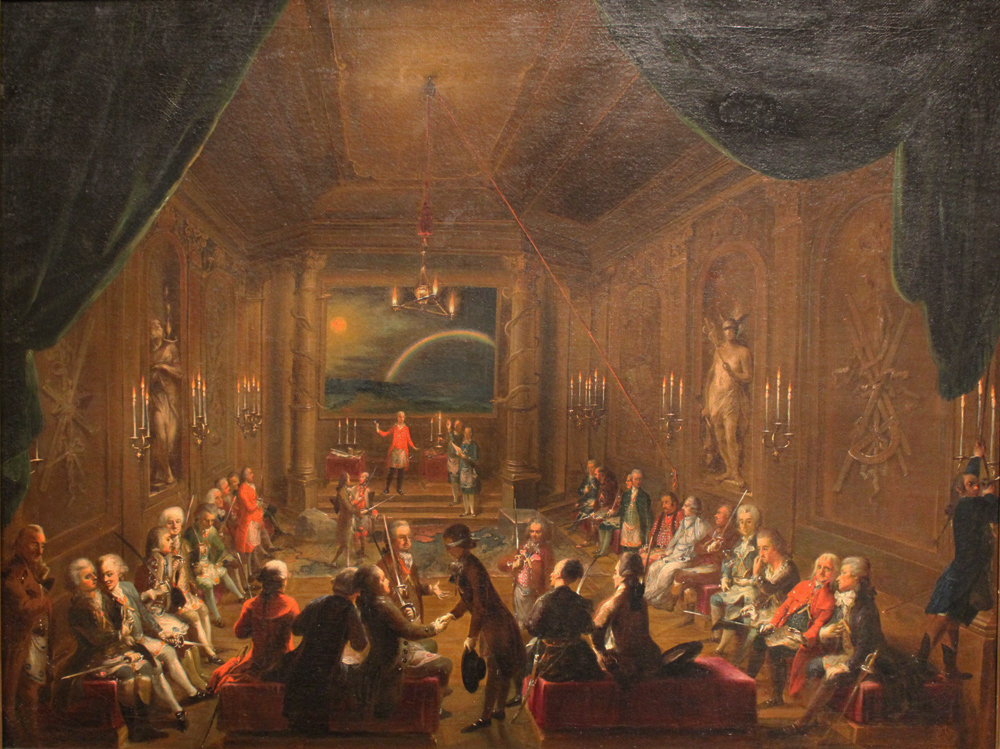
Mozart’s Masonic lodge in Vienna, Zur gekrönten Hoffnung, c. 1785
Masonic Rites and Esoteric Fraternities
Based on Romanticist ideas of indigenous Celtic religion, the first Pagan tradition was restored in a Neo-Druidic ceremony on the Autumnal Equinox in 1717, which inspired the later creation of the Ancient Druid Order. The same year saw the birth of the first United Grand Lodge of Freemasonry in London.
The Romantic aesthetic movement arose during the nineteenth century, coinciding with Neopaganism, which reverenced the natural world and found beauty and depth in the gods of the ancient world. The Romantic movement portrayed ancient polytheists as “noble savages” and regarded Celtic and Nordic literature and verse with the respect already afforded the works of the Classical world.
The Nordic Brothers Grimm reconstructed pagan mythology from folklore and fairytales and Richard Wagner composed the Ring Cycle based on such scholarship. William Morris translated the Icelandic sagas into English and Cecil Sharp assembled village folk songs and dances.
During this resurgence of interest in traditional Celtic and Nordic ancestral ways in the United Kingdom, Neo-Druidism and several esoteric fraternities emerged. Chief among these were high-grade Freemasonry, the Theosophical Society, the Hermetic Order of the Golden Dawn, the Ordo Templi Orientis, and Aleister Crowley’s Astrum Argentum. These usually held a syncretistic world-view involving ancient Egyptian religion, Kabbalah, alchemy and magic.
In The Life of Mozart (Oxford University Press, 1882) the biographer Otto Jahn explained that the great Austrian composer Wolfgang Amadeus Mozart’s (1756-1791) family was involved with Freemasonry and Mozart was a Freemason himself. Mozart was influenced by Ignaz von Born (1742-1791), the leading scientist in the Holy Roman Empire, expert in Egyptian symbolism, and founder of the Masonic Illuminati lodge in Vienna.
Mozart transformed a Masonic/alchemical libretto by Emanuel Schikanader into his famous opera The Magic Flute. The story of the Magic Flute is divided into the three alchemical stages of blackening, whitening and reddening, which transmute base metal into potable gold, or the Philosopher’s Stone. The purification of metal through alchemical processes is a metaphor for the purification of the soul through trial and hardship.
Mozart’s final composition, The Freemason Cantata, was first performed on 18 November, 1791.
A plethora of Masonic degrees and orders, or rites, were developed in the nineteenth century. Many were officially recognized by a Grand Lodge; many others were formally rejected as “Irregular.” The two chief high-grade Masonic rites are the Scottish Rite and the York Rite.
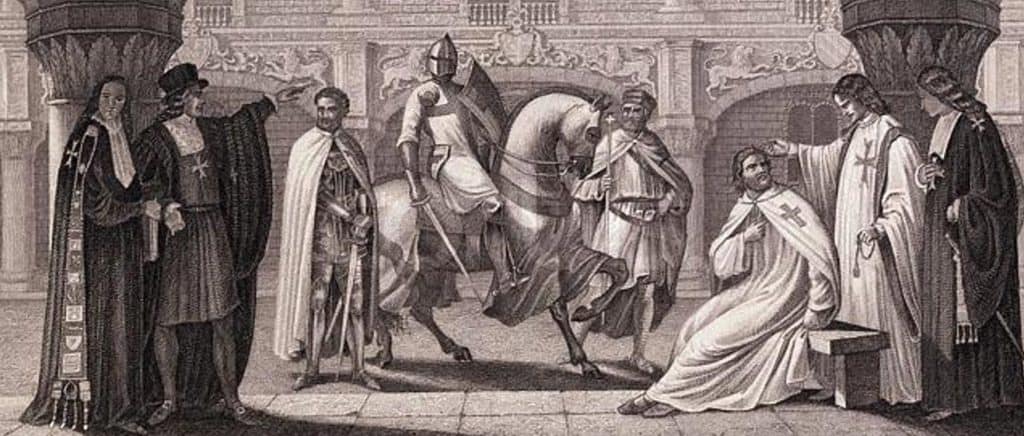
The Knights Templar
The Knights Templar was a monastic military order based in the Temple of Solomon, established in the early twelfth century after the First Crusade, to care for the pilgrims en route to Jerusalem. They became wealthy international bankers by providing the first letters of credit to traveling pilgrims.
The Templars were infamously arrested en masse for trumped up charges of heretical ritual on Friday the 13th of October, 1307. The Order was deliberately disbanded for its wealth by Pope Clement V and the French King Philip IV. Many honest and good knights were tortured for false confessions and many were ruthlessly exterminated. Their Grandmaster, Jacques de Molay, was burned at the stake in 1314.
IN HOC SIGNO VINCES
The motto of the Knights Templar, “In Hoc Signo Vinces,” is Latin for “In this sign you shall conquer/ have victory.” The original Greek expression was translated to Latin and adopted by the first Holy Roman Emperor Constantine I in the early fourth century. The emperor, desirous of a religion with which to rule his new empire, claimed to have seen the words in a vision of the cross rising above the sun in a ray of sunlight.
The future saint claimed to have dreamed that Christ told him to use the sign of the cross on his banner when vanquishing his enemies in battle. Constantine was the first Roman Emperor to convert to Christianity and establish tolerance for the Christian religion current at the time throughout the empire.
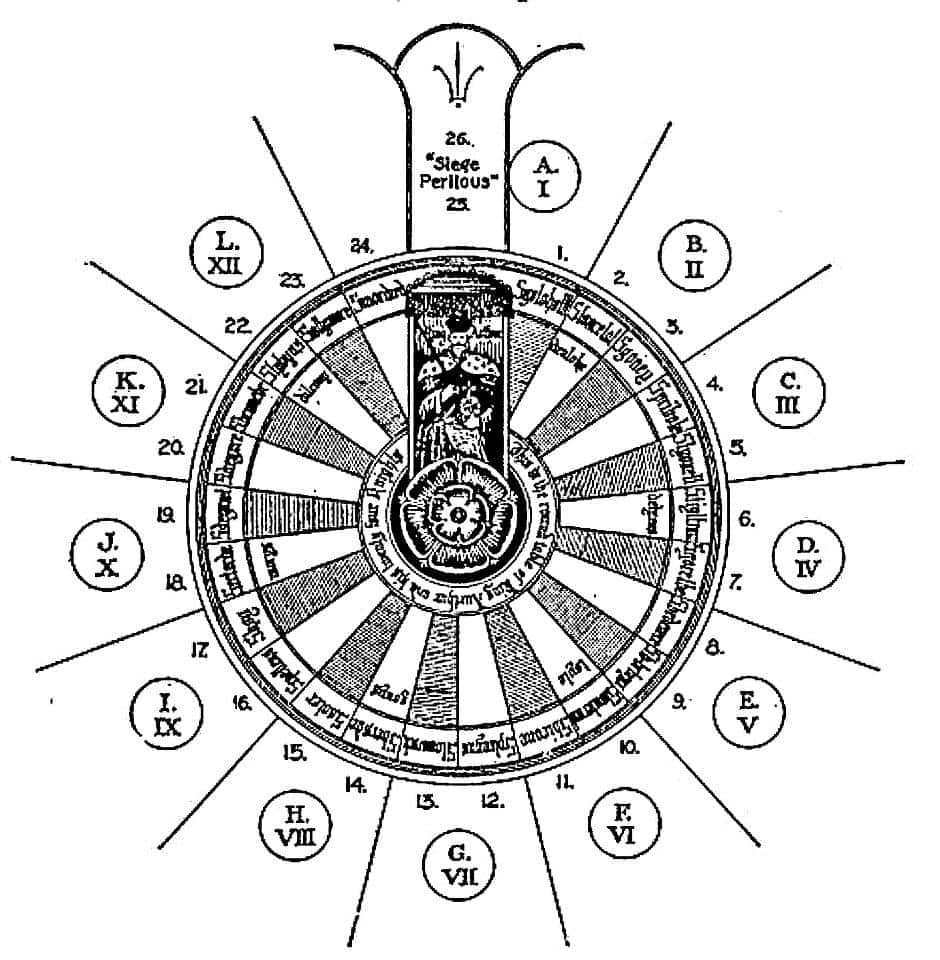
Templar And Mason: The York Rite
The aristocratic French Freemasons were not content that their fraternity be descended from such humble origins as operative stonemason guilds. Cavalier Ramsay (Andrew Michael Ramsay, 1686 – 1743) had ties with France and Scotland, and knew that both countries would embrace a heritage rooted in a Chivalric order of knights. He thus introduced the idea of a connection between the Knights Templar and the Freemasons.
There is no concrete evidence, much less proof, of the Knights Templar surviving in any form. The eighteenth century Masonic theory originating with Cavalier Ramsay suggests that certain of these banker warrior-monks escaped the church-sanctioned royal manhunt and found sanctuary within the Masonic fraternity. In the eighteenth century the Order of Strict Observance was created, allegedly out of Paris, France, and dwindled with unverified claims of being the reconstituted Templar order.
At the end of that century Templar degrees were being held in Ireland, which quickly spread to Edinburgh, Scotland and York, England. Rosslyn Chapel, located in the vicinity of Edinburgh, was founded in 1446 by William St. Clair, ancestor of the traditional Grandmasters of the Masons in Scotland. The chapel architecture embodies both Templar and Masonic symbolism.
The York Rite of Freemasonry is composed of three bodies: Royal Arch chapters, Cryptic councils and Knights Templar commanderies. There is also an invitation-only Masonic Knights Templar organization.
The Masonic boys group is named the Order of DeMolay International in honour of the last grandmaster of the Knights Templar. A number of other Masonic and independent Knights Templar organizations exist for those who are interested in participating or learning more.

Giuseppe Balsamo Cagliostro. Line engraving by C. Guérin,
Credit: Wellcome Library, London.
Cagliostro and the Ancient & Primitive Rite of Memphis and Misraim
Giuseppe Balsamo, a.k.a. Joseph Balsamo, a.k.a. Count Alessandro di Cagliostro (1743-1795) was a pharmacist and auxiliary for the Sovereign Military Order of Malta on the island of Malta. He was later secretary to Cardinal Orsini and sold faux Egyptian magical amulets and paintings. He married and relocated to London where, it is said, he met the Comte de Saint-Germain.
Cagliostro traveled throughout Europe initiating lodges of his own Masonic rite. The Rite of Misraim was created in 1788 by Cagliostro as a system of Freemasonry, alchemy and Egyptian magic in ninety degrees. On a visit to Rome was captured by the spies of the Inquisition. On his person was the alchemical manuscript The Most Holy Trinosophia, which may be his own work.
He was imprisoned in the Castel Sant’Angelo and sentenced to death for being a Freemason. The Pope lightened the sentence to lifetime imprisonment. Cagliostro made an escape attempt and was sent to the Fortress of San Leo, where he died soon thereafter.
In 1838 Jacques Etienne Marconis de Nègre (1795-1868) created the Rite of Memphis, a rite combining the Egyptian theme of the Rite of Misraim with Templarism and symbolic alchemy. In the 1880s The Ancient and Primitive Rite of Memphis-Misraïm was formed in Naples, Italy under General Giuseppe Garibaldi (1807-1882), as a fusion of the two Egyptian rites.
The Rite of Memphis-Misraïm is known as Egyptian Freemasonry due to its use of Hermetic or alchemical symbolism; and alchemy is supposed to have originated in Egypt. The rite is outstanding for its use of 99 degrees.
The English Masonic author John Yarker became Grand Master in 1902 and helped popularize the site. The succeeding Grand Master in 1913 was the German Theodor Reuss (1855-1923), who would go on to help found the Ordo Templi Orientis (O.T.O.) as a revival of Adam Weishaupt’s Bavarian Order of Illuminati.
When I met him, Robert L.D. Cooper was a Scottish Freemason and Curator of the Grand Lodge of Scotland Museum and Library in Edinburgh, which holds the oldest Masonic lodge records in the world. The best source on Cagliostro is certainly his book with Philippa Faulks, The Masonic Magician: The Life and Death of Count Cagliostro and his Egyptian Rite (2008) published by Watkins Publishing.
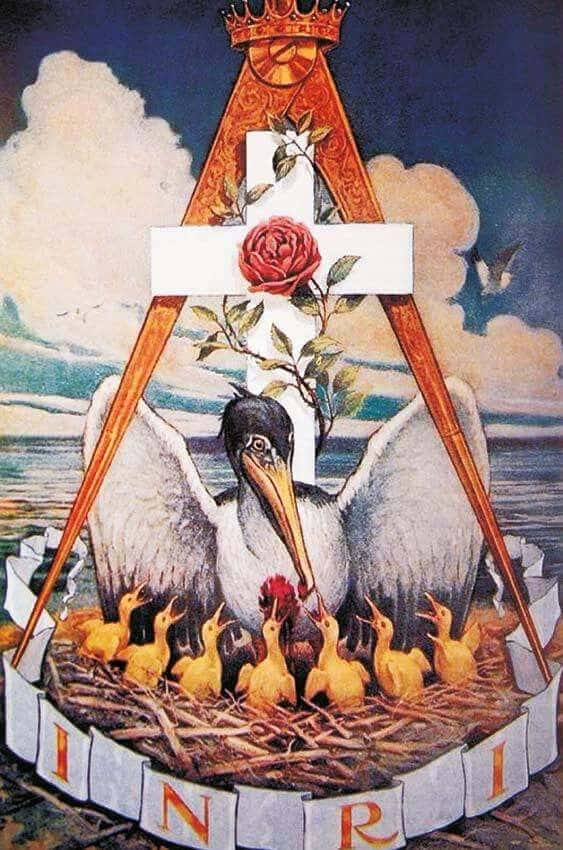
Alchemy in Rosicrucian Texts
Alchemical symbolism is prominent in the original Rosicrucian texts. The German Lutheran pastor Johann Valentin Andrae (1586-1654) published successively the Fama Fraternitatis (1614), the Confessio Fraternitatis (1615), and The Chymical Wedding of Christian Rosenkreutz 1616).
Published anonymously, these works initiated the legend of Christian Rosenkreutz and the secret Fraternity of the Rose Cross, which would culminate in the formation of various Rosicrucian orders.
The Fama claims that there are heavenly treasures of godly wisdom with secrets of hidden and invisible things, which accords with the teaching of wise forefathers. The author looks forward to a day when this wisdom is revealed to all. It then pronounces the discovery of the Fraternity of the Order of the Rosy Cross.
The pamphlet goes on to offer a short biographical sketch of the founder and chief of the order, the “most illumined Father” and Brother C.R. This Brother C.R. was a student of Theology, Mathematics and Physics, as well as the Greek and Latin languages. He was especially gifted at the transmutation of metals: alchemy. He was a German who traveled to Arabia and Egypt and elsewhere around the world to seek and teach the Light of knowledge.
The author praises learned men, magicians, Kabbalists, physicians, and philosophers. C.R. returned to his native Germany and determined that Europe needed a community of “true philosophers” devoted to the Mysteries. Thus he created the Fraternity of the Rosy Cross. The rest of the work is devoted to a description of the Vault of Christian Rosenkreutz and it closes with a confession of Christian faith.
The Confessio
The Confessio Fraternitatis: or the Confession of the Laudable Fraternity of the Most Honorable Order of the Rosy Cross, Written to All the Learned of Europe was translated and published in English in 1652 under the name Thomas Vaughan. The Confessio declares that it is a supplement to the Fama.
This book primarily admonishes the reader to study the Holy Bible and avoid false alchemists. It denounces Mohammed, the founder of Islam, and the Pope, the head of the Roman Catholic Church. It is suggested that the reader who sincerely seeks wisdom and makes himself known to the Order of the Rose might be invited to join the fraternity.
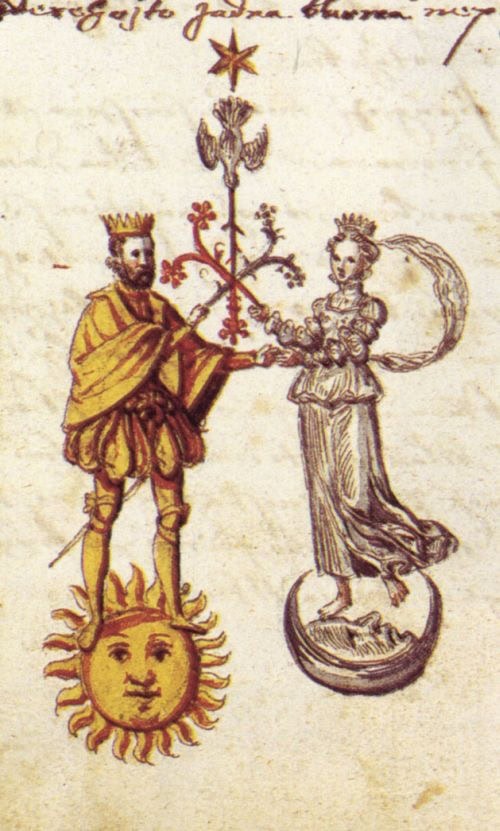
The Chymical Wedding of Christian Rosenkreutz
The Chymical Wedding is an allegorical mystical ascent through seven stages. The narrator is the main character, and he and his companions are led by a virgin through various feats and processes for seven days.
The book introduces John Dee’s Monas symbol right away as the sign of victory: “IN HOC SIGNO VINCES,” from Emperor Constantine and the Knights Templar, but referring to the Monas instead of the Christian crucifix or cross. The art of Hermes is lauded as producing wholesome medicine (elixir). There is a poem in the version translated from the German into English by Edward Foxworth in 1690:
What Fire, Air, Water, Earth
Were unable to rob
From the holy ashes
Of our kings and queens
Was gathered by the faithful flock
Of alchemists
In this urn
The Chymical Wedding references the Sun, Moon and five planets of ancient astronomy and astrology. There is a description of a laboratory where essences and juices are extracted from plants and precious stones and other sundry things; which makes this an alchemical laboratory.
Another room contains an alchemical apparatus with torches for heating, kettles, small pipes and a fountain. The apparatus boiled water that dripped into a concoction, dissolving it, producing a kind of yellow and then red liquor. This red elixir was then captured by tap in a golden globe. When the globe cooled the lid was lifted to reveal a snow-white egg.
The climax of the romance is when these alchemical processes are completed and result in the resurrection of a newly married queen and king. The main character and his companions are declared a Knight of the Golden Stone. They meet the tomb of Christian Rosenkreutz and finally return home.
Rosicrucian philosophy, therefore, has from its inception walked hand in hand with symbolic alchemy, which is often explicit in its literature. For example, the German alchemist Michael Maier (1568–1622) discusses symbolic alchemy in chapters Eight and Nine in The Laws of the Fraternity of the Rosie Crosse, Thus alchemy found its way into high grade Freemasonry and various Rosicrucian Hermetic orders.
For translations of Rosicrucian and other alchemical works visit the Alchemy Website.
To read more about the Rosicrucians:
The Medieval Hermetic-Kabbalistic Tradition and Rosicrucianism
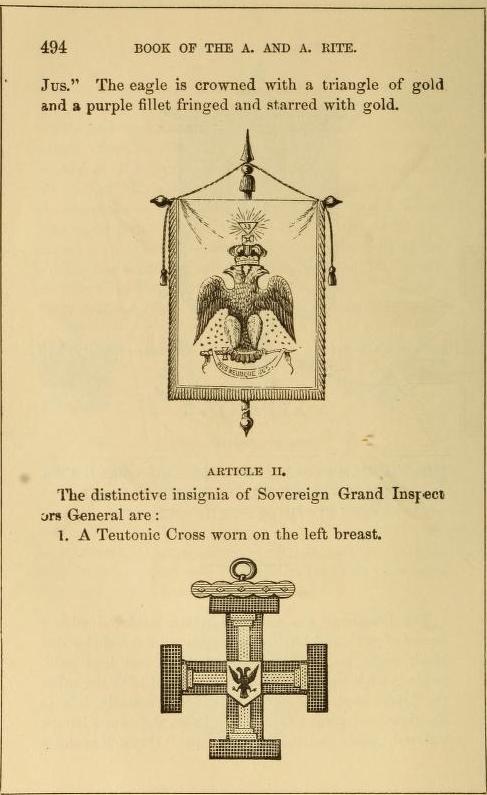
The Alchemical Laboratory of High Grade Freemasonry
The degrees of Craft Freemasonry are Entered Apprentice, Fellow Craft, and Master Mason; and to these some would add the Royal Arch degree. To be considered Masonic, a degree, rite or order has to fall under the authority of a national or state Grand Lodge body recognized by other Grand Lodges.
“Hauts Grades” or High Degree Masonry may have had their origin in the English Civil War and late seventeenth century Britain. When Scots fled to France to escape English rivals in this time of strife, their Masonic ritual there became “Ecossais,” which means “Scottish.”
The term ‘maîtres Ecossois,’ or ‘Scots Masters,’ appears in French records only in the eighteenth century. The symbolism of the humble operative stonemason guild could not satisfy the tastes of the French aristocracy of that and the following century. They and other like-minded Europeans and Americans created a plethora of Masonic or quasi-Masonic degrees, rites and orders with grandiose titles bearing lofty and mysterious implications.
Traditionally, none of the advanced degrees teaches anything outside of the three Craft grades, they only expand on them as further instruction.
The ten sephirot added to the twenty-two paths of the Kabbalistic Tree of Life equals a total number of thirty-two, the number of degrees earned by a Scottish Rite Mason. The thirty-third degree is bestowed upon worthy thirty-second degree Masons by a Supreme Council of thirty-three members.
In the heraldry of the Holy Roman Empire the two heads of the double-headed eagle symbolized Church and State. The Double-Headed Eagle icon is associated with the final two degrees of the Ancient and Accepted Scottish Rite of Freemasonry.
The 32° “Spes mea in Deo est” is the Latin motto, “My hope is in God,” in reference to the Masonic Grand Architect or Supreme Being. The 33° “Deus Meumque Jus” is the Latin translation of the motto of the British Monarch on the coat of arms of the United Kingdom. The motto of the Royal arms of England, “God and my Right,” is originally from the French “Dieu et mon droit.” The phrase implies the divine right of the monarch to govern.
The first known Scottish Lodge, of Scottish and English membership, was officially established in Bordeaux, France in the late eighteenth century. In the era of the French and American revolutions, Stephen Morin of Bordeaux was given a patent by a council in Paris to export the haut degrees to America, as Grand Inspector to the New World. Under Morin’s authority, Henry Andrew Francken opened a ‘Lodge of Perfection’ in Albany, New York.
The first Supreme Council of the Ancient and Accepted Scottish Rite was organized in Charleston, South Carolina, in 1801. Twelve years later the Supreme Council of the Thirty-third degree for the Northern District and Jurisdiction of the United States of America was organized in New York City.
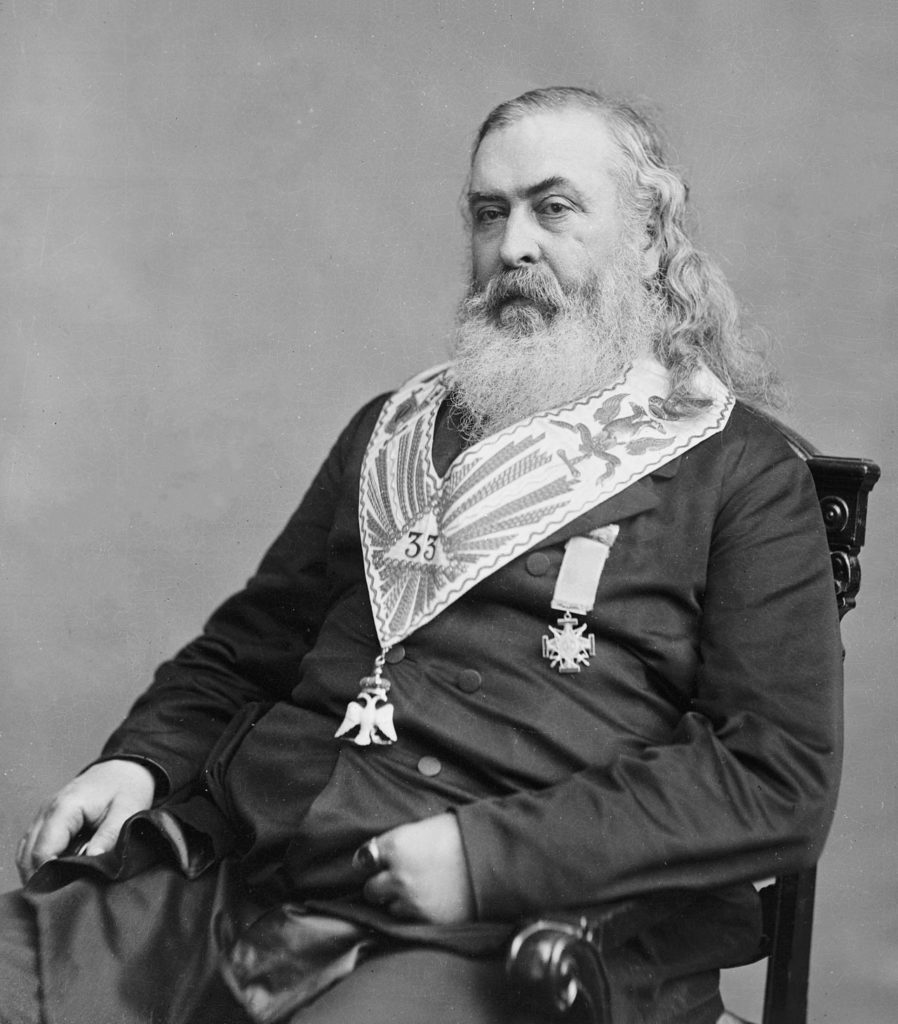
Albert Pike (photographed by Mathew Benjamin Brady)
Albert Pike
The great ritualist and patron of the Scottish Rite, Albert Pike (1809 – 1891), opened his personal library to become the first public library in the District of Columbia. Since the cornerstone of the temple was laid in 1911, the library has been the core of the House of the Temple on 16th Street.
The temple has since served as the headquarters of the Supreme Council (Mother Supreme Council of the World) of the Southern Jurisdiction of the 33rd Degree of the Ancient and Accepted Rite of Freemasonry.
Pike explained the Scottish Rite degrees in his 1872 masterpiece, Morals and Dogma of the Ancient and Accepted Scottish Rite of Freemasonry. Scottish Rite ritual is divided into thirty-two degrees in four sections or bodies. In the ritual of the first body, the Lodge of Perfection, there are a number of explicit alchemical references.
In the Fifth Degree, for example, there is mention of death and spiritual rebirth through putrefaction, like H. A., the Phoenix, Osiris, Mithra, Persephone, Jesus, and Odin. In the north of the Fifth Degree theater are representations of the North Star and the seven stars of the Big Dipper, part of the constellation of Ursa Major or Great Bear.
The Pole Star sect of Wudang Mountain Daoism in the region of Hubei, China uses this same astral symbolism in its practice of inner alchemy.
In Western alchemy, these stars are called the seals of the planets. Scottish Rite Freemasons recognize the correspondence between the seven planets, the seven metals and the seven chakras of Kundalini yoga.
The Sixth Degree emblem or “jewel” is an image of the sun, the moon and Mercury. In the Ninth Degree there is a five-pointed gold star symbolizing the five elements.
Perhaps the most explicit alchemical symbolism in Freemasonry is the Chamber of Reflection.
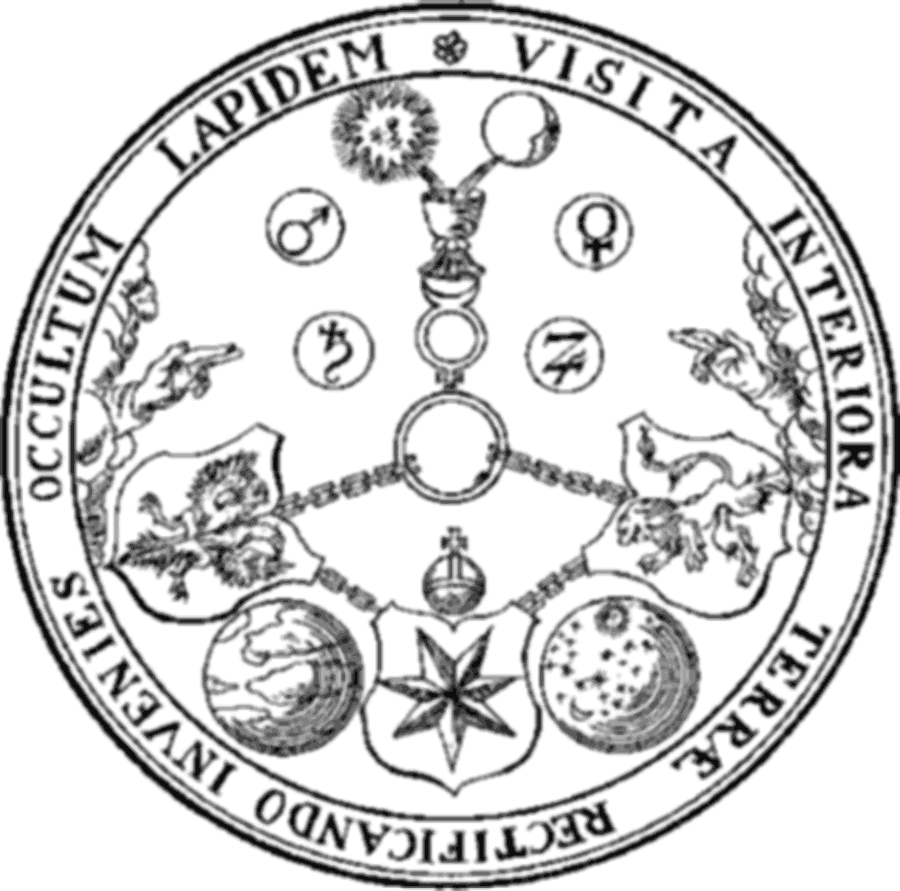
The Chamber of Reflection
The Chamber of Reflection is an isolation room used in high grade Masonic initiation ritual. An early example of this ritual is the French “Rituel alchimique secret du grade de vrai franc-maçon académicien,” “Secret alchemical ritual of the grade of true Freemason scholar,” created in 1750 by the founder of the Illuminés Lodge in Avignon, Antoine-Joseph Pernety.
In preparation for initiation, the candidate is to sit alone in the Chamber of Reflection to contemplate his relationship with Freemasonry, especially his motivations and hopes for the future. As an act of spiritual purification he is also to meditate on death.
There is a skeleton or skull and crossbones in the room. The room is thus likened to a tomb where the candidate goes through symbolic death, and a womb out of which the candidate will experience symbolic rebirth.
The chamber is a symbol of the Earth in its alchemical sense, and its very real sense of being the from from which life comes and the place to which life inevitably returns. Along with other symbols in the chamber, this is directly illustrated by a sign on the wall with the motto, “V.I.T.R.I.O.L.”
V.I.T.R.I.O.L. is an acronym for “Visita Interiora Terrae Rectificando Invenies Occultum Lapidem,” an alchemical term originating in the fifteenth century work L’Azoth des Philosophes by the alchemist Basilius Valentinus. The acronym means, “Visit the interior of the earth and purifying you will find the hidden stone.” By definition vitriol was a chemical compound of sulfates of iron or copper; it was sulfur, where oil of vitriol was sulfuric acid.
Paracelsus introduced salt to the traditional alchemical duality of mercury and sulfur, to become the first to define the three symbolic cosmic substances, the tria prima: mercury, sulfur, and salt. Smoke described the volatility (the mercurial principle), the heat-giving flames described flammability (sulfur), and the remnant ash described solidity (salt).
Mercury (Spirit) was the feminine, moist and cold, and life-force; Sulfur (Father) symbolized the masculine, dry and hot, and the mind; and Salt (Son), a crystal, was a reference to matter and the purified physical body. Physicians seeking the cause and treatment of any disorder could refer to this model for guidance. This three part formula became central to the Western alchemical world-view. – From The Early Alchemists of the West
There is a single chair and desk in the chamber, and on the desk is a lamp, a piece of paper, and a writing utensil. In some cases upon the desk there are three small containers holding the three elements traditionally associated with alchemical transmutation: Salt, Sulfur, and Mercury. Thus we find in the very heart of Freemasonry the way of the Royal Art.

Rosicrucianism in the Scottish Rite
In the symbolism of several degrees throughout the Scottish Rite ritual there is indicated the secret vault of the Rosicrucians, the mythological father Christian Rosencrutz’s tomb, a symbol of death and rebirth. The second section of Scottish Rite ritual, degrees fifteen through eighteen, is called Chapter of Rose Croix; the name is a reference to the Rosy Cross of the Rosicrucian brotherhood.
The third section is the Council of Knights Kadosh, degrees nineteen through thirty. More of the Hermetic Art in the Scottish Rite is enshrined in the twenty-eighth degree, the Knights of the Sun or Prince Adept, a primarily alchemical ceremony. In Morals and Dogma in his chapter on this degree Pike devotes twenty pages to alchemical philosophy and ritual.[5]
The final thirty-first through thirty-third degrees belong to the Consistory of Masters of the Royal Secret. Chapter Thirty-two of Morals and Dogma describes the final degree, the teachings of which Pike calls “Magism,” in reference to the Christian magi or kings of legend who followed the North Star to the holy infant. He explains that “Magism was the Science of Abraham and Orpheus, of Confucius and Zoroaster.”
The chapter concludes with a word on the Royal Secret: “The ROYAL SECRET, of which you are Prince, if you are a true Adept, if knowledge seems to you advisable, and Philosophy is, for you, radiant with a divine beauty, is that which the Sohar terms The Mystery of the BALANCE. It is the Secret of the UNIVERSAL EQUILIBRIUM.” He finishes “which makes possible, and shall at length make real, the HOLY EMPIRE of true Masonic Brotherhood.”
As we have seen, within the Masonic fraternity and related orders there are outstanding individuals who have such an understanding of the Mysteries as such that they become lamp posts to guide others to the Light. Two such relatively modern luminaries are Manly Palmer Hall and Walter Leslie Wilmshurst.
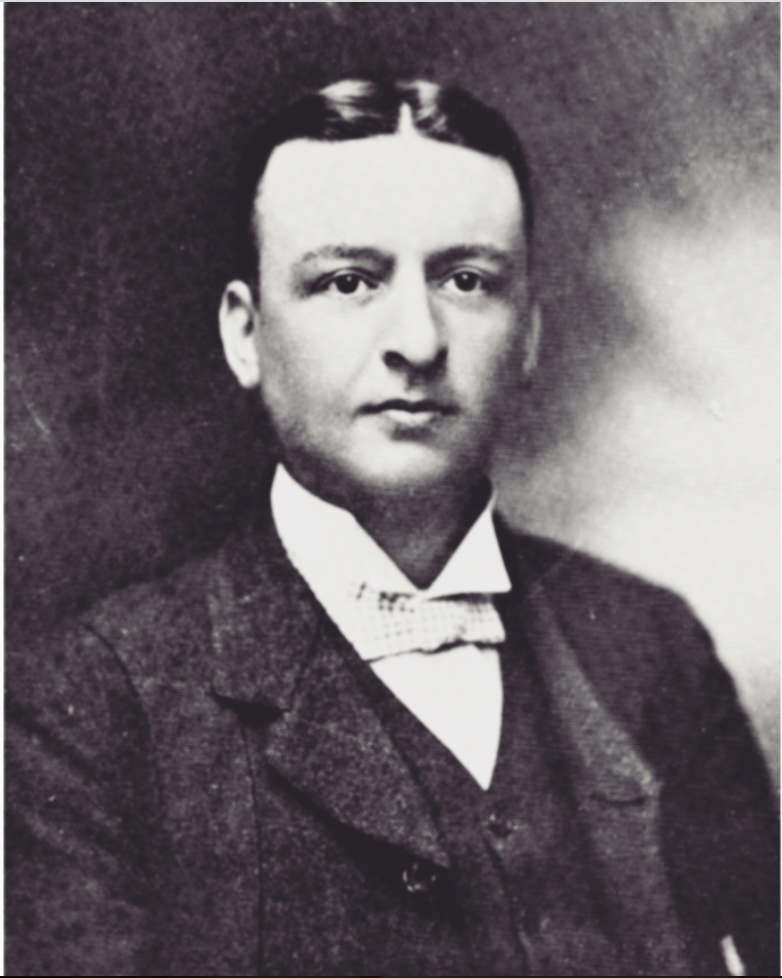
Walter Leslie Wilmshurst (1867-1939)
Walter Leslie Wilmshurst
Walter Leslie Wilmshurst (1867-1939), English author and Freemason, was Asst. Grand Director of Ceremonies for the United Grand Lodge of England. He founded the Lodge of Living Stones No. 4957 in Leeds, 1927, acting as Worshipful Master from 1928-1930 and 1937-1938. He wrote four books on the subject of English Freemasonry, the best received of which was The Meaning of Masonry (1922).
Wilmshurst also had articles published in The Occult Review Magazine such as “Spurious Ecstasy and Ceremonial Magic” (1911) and “The Fundamental Philosophic Secrets Within Masonry” (1925), which Robert Lomas has made available online at Web of Hiram.
Wilmshurst wrote that Freemasonry possessed meaning and secrets beyond what is seen on the surface. Freemasonry is not a philosophy or a religion; it is an order of initiation, a system of morality, a theory and a practice. It is a science and an art in the manner of the schools of ancient wisdom and the Mysteries of Egypt and Greece.
Wilmshurst claimed the name of Hiram Abiff, the central figure of the Master Mason (Third) Degree, was a form of the Egyptian name “Hermes, the teacher of the secret hermetic science and wisdom, and the student is strongly urged to study those two important ancient treatises of Initiation-science, the Divine Pymander of Hermes and The Shepherd of Hermes.”[6]
Wilmshurst believed that the secret science of Freemasonry had been passed along by masters such as Paracelsus, Abbot Tritheim, Basil Valentine, Jacob Boehme, George Johan Gichtel, Thomas Vaughan, and Elias Ashmole.[7] Wilmshurst’s secret science of Freemasonry is none other than symbolic alchemy.
He claimed that the Mysteries were not apparent, and could not be transmitted directly, “save through allegory and symbol, myth and sacrament.”[8] One does not simply join a fraternity and have truth revealed: the aspirant must labor for truth on one’s own.
The disciple must be a spiritual athlete. The spirit must awaken. One must master one’s sense-nature, mental processes, thoughts, and will through discipline. Wilmshurst directed his readers to live by a rule of life and practice the art of living.

Manly P. Hall (1901-1990)
Manly Palmer Hall
Manly Palmer Hall (1901-1990) was an American mystic and prolific author on subjects related to the Western Mystery Tradition. Out of his 150 works he is best known for An Encyclopedic Outline of Masonic, Hermetic, Qabbalistic and Rosicrucian Symbolical Philosophy: Being an Interpretation of the Secret Teachings concealed within the Rituals, Allegories and Mysteries of all Ages (1928), known as The Secret Teachings of All Ages.
Born in Canada, Hall relocated to Los Angeles, California when he turned eighteen years of age. He began his writing career with The Lost Keys Of Freemasonry and was ordained in the Church of the People in 1923. In 1934 Hall founded the Philosophical Research Society.
In 1954 Hall became a Freemason, soon joining the Scottish Rite, and in 1973 he received the honor of the 33rd Degree. Over his lifetime Hall gave thousands of lectures within the United States and abroad. Hall’s work has served as inspiration for many who tread the path seeking higher truth through mystical insight and wisdom.
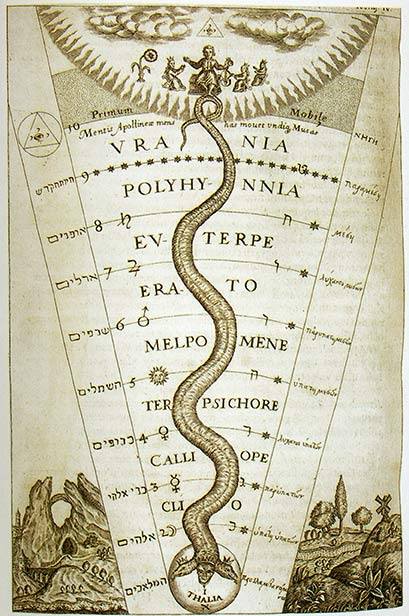
Lodge of the Nine Sisters
I, myself, the author, was a Thirty-second Degree Scottish Rite, Southern Jurisdiction, Freemason with the Valley of Alexandria, Virginia in the 2000s. My mother lodge in Washington D.C., the Lodge of the Nine Muses No. 1776, was and is a declared Mystery School lodge. The lodge held a reverence especially for Manly P. Hall, William L. Wilmshurst, and W. Kirk MacNulty, a prominent Freemason amongst prominent Freemasons, and my Masonic mentor.
I had the distinct honor of visiting the lodge at Leeds with Brother MacNulty and meeting up with his friend there who would become the first African American Grandmaster of the District of Columbia. It was during this trip that MacNulty introduced me to the staff at Freemasons’ Hall on Great Queen Street (the United Grand Lodge of England), as well as to several outstanding lodges in London.
MacNulty had served as Master of the Lodge of Living Stones, the lodge founded by Wilmshurst. Later in life MacNulty subsequently founded the Lodge of the Nine Muses along with certain Past Masters of Alexandria-Washington Lodge No. 22, which boasts George Washington, the first President of the United States, as its founding Worshipful Master. The Lodge of the Nine Muses (or Sisters) is one of several lodges around the world that help preserve and pass on the teachings of alchemy and the Western Mystery Tradition.
Sources
[1] W. Kirk MacNulty, The Way of the Craftsman, Central Regalia Limited, London, 2002, pp. 49-52.
[2] Michael Maier, “Atalanta fugiens,” Emblem 44 (1618).
[3] The Masonic Book Club. Trestle-Board, A facsimile reprint of the original Trestle-Board published by the Baltimore Masonic Convention of 1843. Bloomington, Illinois: The Masonic Book Club, 1978.
[4] Timothy Hogan, The Alchemical Keys to Masonic Ritual, 2007.
[5] Albert Pike, Morals and Dogma of the Ancient and Accepted Scottish Rite of Freemasonry, Supreme Council, Thirty Third Degree, of the Scottish Rite, Southern Jurisdiction of the United States, 1871, pp. 772-792.
[6] Walter Leslie Wilmshurst, The Masonic Initiation (1924), the sequel to The Meaning of Masonry (1923), “Seeking a Master” Chapter.
[7] Ibid., from “Past and Future of the Masonic Order” Chapter.
[8] Ibid., from the Introduction.
